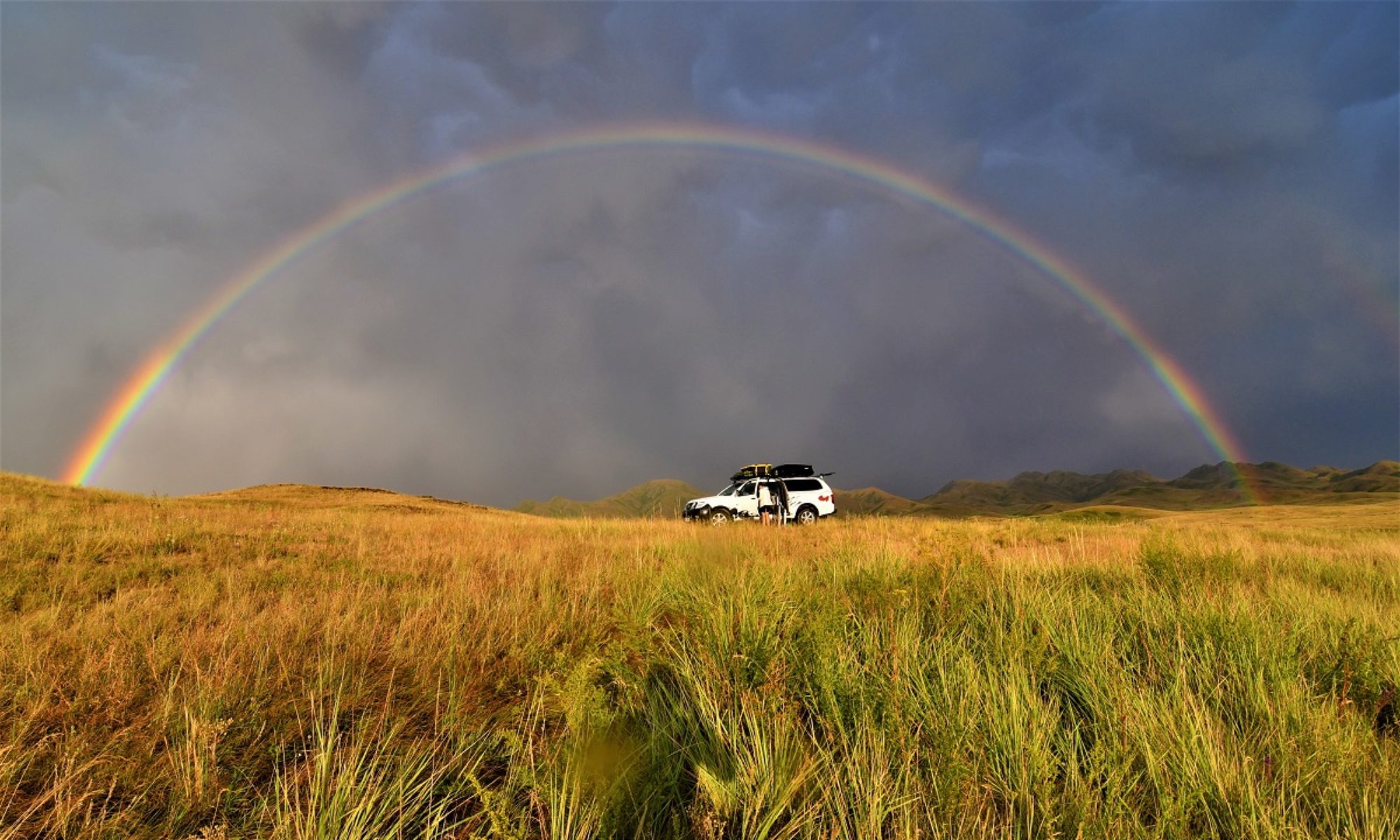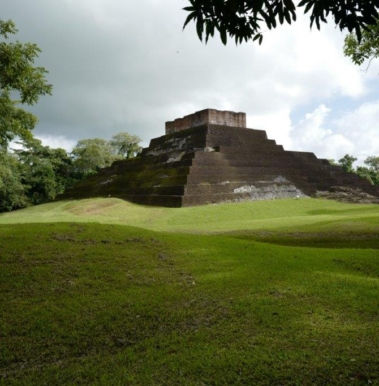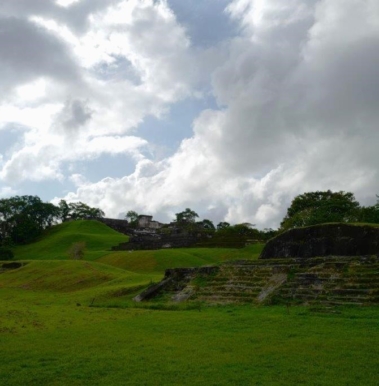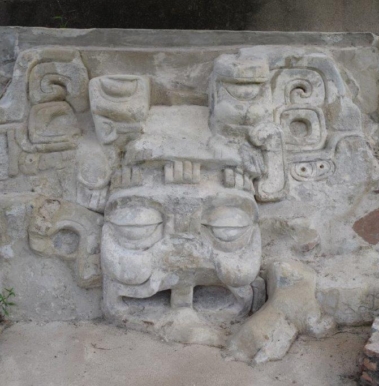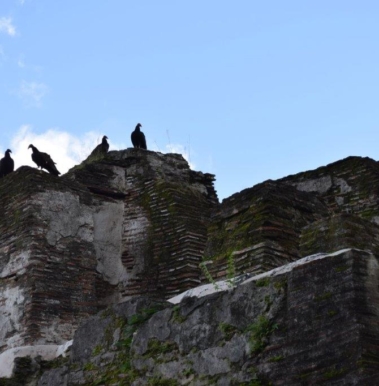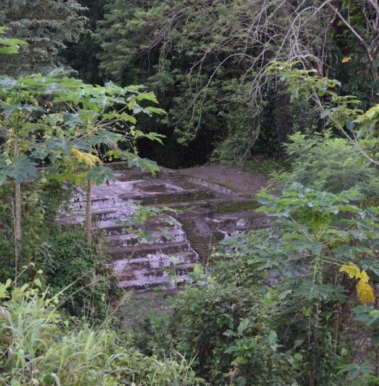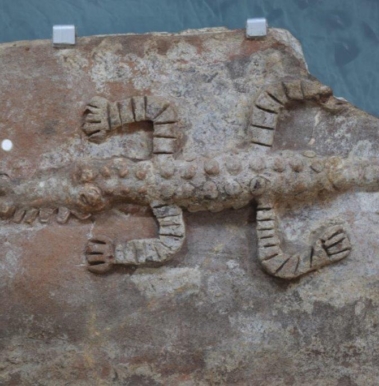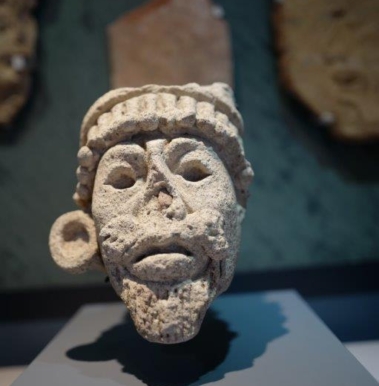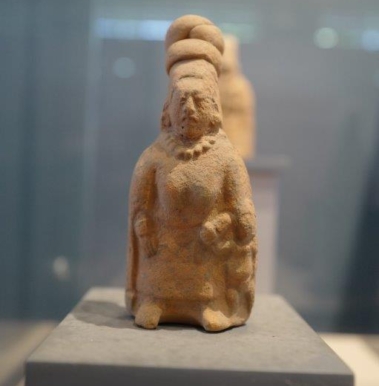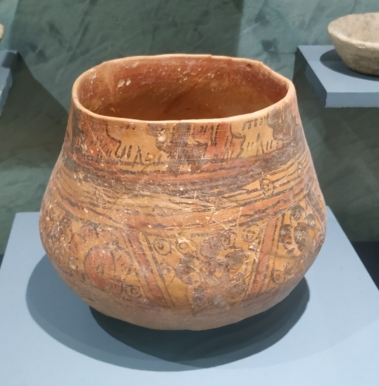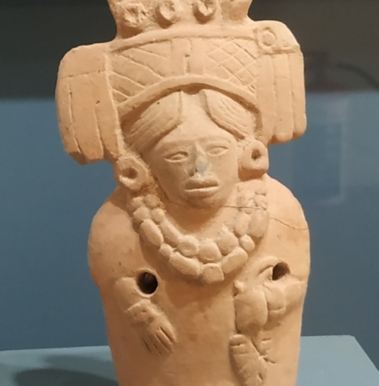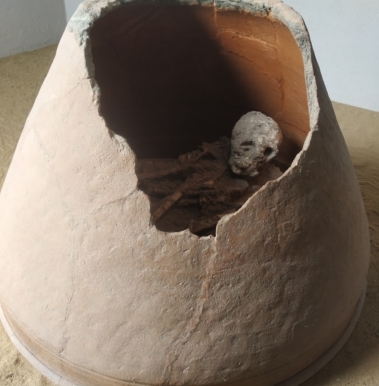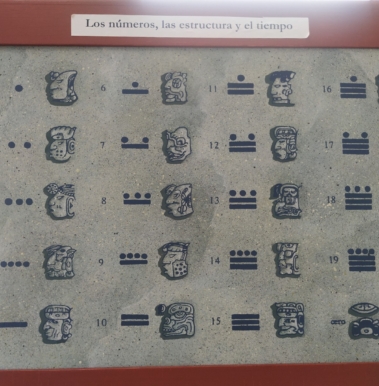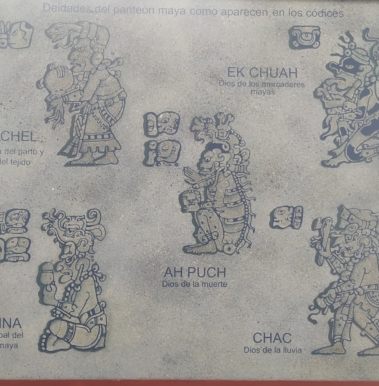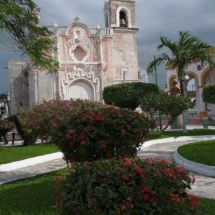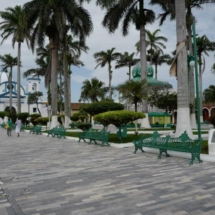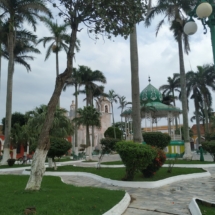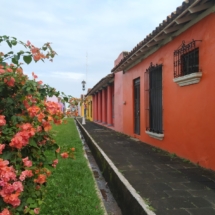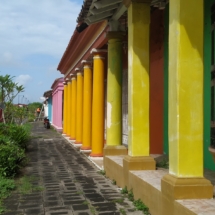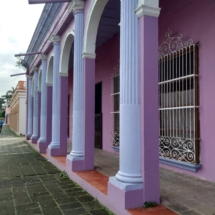PART 1. Puerto Cortes (Honduras) to Coscomatepec (Mexico)
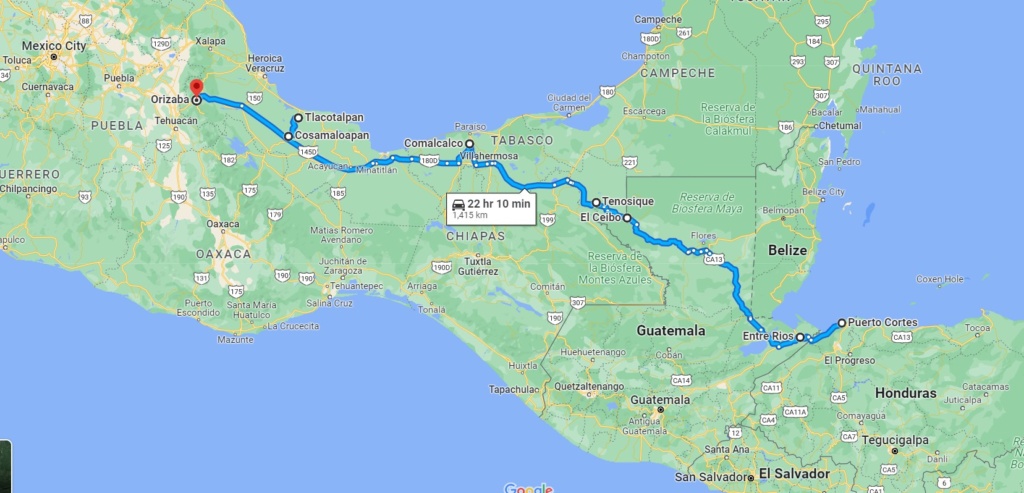
December 1, 2022 – GUATEMALA – Poptun
Puerto Cortes is not far from the border with Guatemala so we leave after breakfast and get to the border at lunch time.
On the way, we go through lush landscapes with banana and palm oil plantations. We also notice a lot of palapas used to shelter restaurants, picnic areas or at the back of houses. A palapa is an open structure made of wooden pillars supporting a thatched roof made of dried palm leaves. it protects from the sun and is cool. The ones we saw had steep pitched roofs which came down low. ( lower than the picture below)
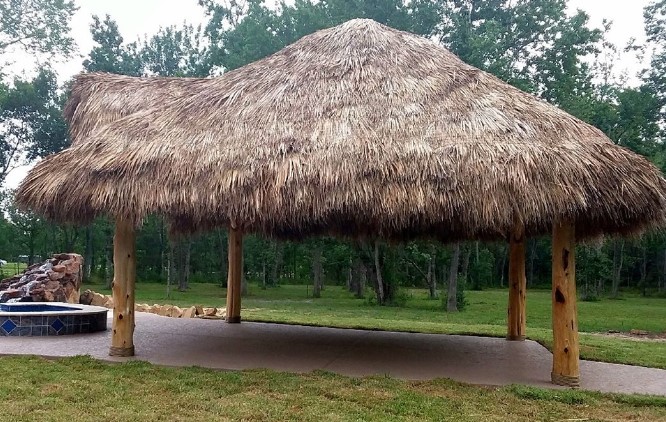
Formalities at the border are not too bad and we are soon on our way. It rains heavily in the afternoon and the place we had in mind for camping tonight is in the grounds of a working farm ( Finca) and restaurant. Comments of previous visitors mention that it gets muddy if wet so we try to find another night spot but without success.
We decide to go to Finca Ixobel anyway, hoping for the best and arrive at night (dark by 5pm). In the end, the camping spot is fine as it is on a cemented area and we are close to the toilet block. We are the only campers but there are a few customers at the restaurant. We do not feel like cooking in the rain so we retreat to the restaurant for dinner and for the wifi !!
December 2, 2022 – MEXICAN BORDER – El Ceibo/Tenisoque
We got to the border around 3 pm. A bit slow on the Guatemalan side and once in Mexico, after the car was fumigated, we had some of our fresh fruit and vegetables + meat confiscated by a Border Agriculture protection Control officer! (tomatoes, avocado and mango as they have seed in them and could potentially bring some infectious disease to the locally grown produce). We foolishly had bought them the previous day!
By the time we finished the formalities at the border it was 4:30 pm and we drove to the next town Tenisoque. We found the Hotel Frances ( IOverlander app) on the exit of town just before dark. The hotel let us park at the end of the building for Mex$ 100 ( around $10). There is access to a small restaurant with wifi and restrooms until midnight so it works perfectly for us.
December 3, 2022 – Villahermosa – Comalcaco
After discussion we decided to go for Villahermosa rather than heading for the Yucatan Peninsula. Our reasoning being that we have a slim chance of being able to ship the car from Texas to Colombia. We have contacted the agent who cleared our car when we entered the USA and should he come with a solution we want to be able to get to Texas as quickly as possible.
We pass by lots of stalls by the side of the road, selling fresh pineapple, mandarins, coconuts. We also see guys trying to sell budgies and small parrots near toll booths. We make it to Comalcalco where we park at a PEMEX station for the night.
December 4, 2022 – Comalcalco Ruins – Cosamaloapan
The Comalcalco Ruins are the most westerly known Maya ruins. They are surrounded by jungle trees and is the only Maya city built with kiln-fired bricks rather than limestone blocks. The bricks were set with mortar made from ground seashells and you can see broken sea shells on the site.
Comalcalco was at its peak between AD 600 and 1000 and an important centre of commerce and a control point between the coast and the interior.
[Click on the picture to open the gallery]
We drive on and around lunch time we stop in Minatitlan at a restaurant with TV screens. Paul wants to watch the England game! The service is slow but it is working in our favour and we stay until the middle of the second half. We stop for the night at Cosamaloapan.
December 5, 2022 – Tlacotalpan – Orizaba – Coscomatepec
We are now in the state of Vera Cruz which borders the Gulf of Mexico. The climate is warm and humid. We drive to the small colonial town of Tlacotalpan near the coast. The area is quite marshy and even the buildings seem to sip the dampness. On the way we drive through miles of sugar cane fields and pass numerous tractors pulling heavily loaded trolleys, sometimes 2 or 3 trolleys are attached, taking the harvested sugar cane to the refineries.
The small town of Tlacotalpan ( the name means in indigenous Nahuatl language “land between the waters”) sits at the mouth of the Papaloapan river and on the coast. Founded in 1550, the town is also known as “La Perla del Papaloapan” for its beautiful classic architecture and colourful streets.
[click on the picture to open gallery]
We drove on to Orizaba, known for its colonial buildings and the art nouveau Palacio de Hierro, brought from Belgium in the 1890s and designed by Eiffel. All the nuts, bolts and screws were all brought over from France!
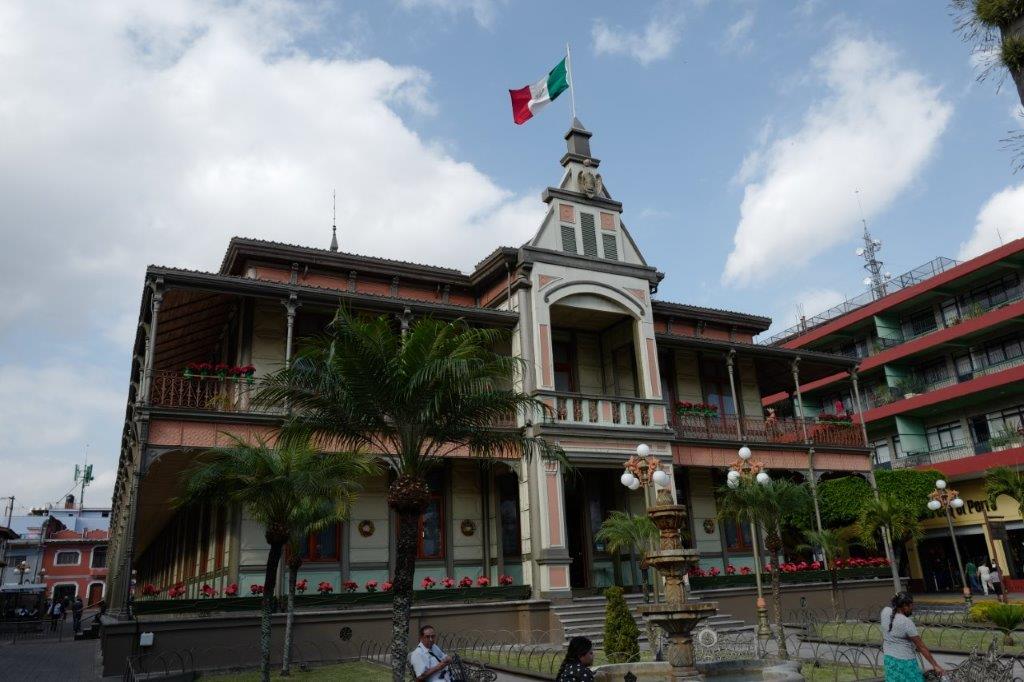
We are near Pico de Orizaba, 5,636m, also known as Citlaltépetl an inactive volcano, the highest mountain in Mexico and the third highest in North America. We are lucky to see it a few times from a distance.
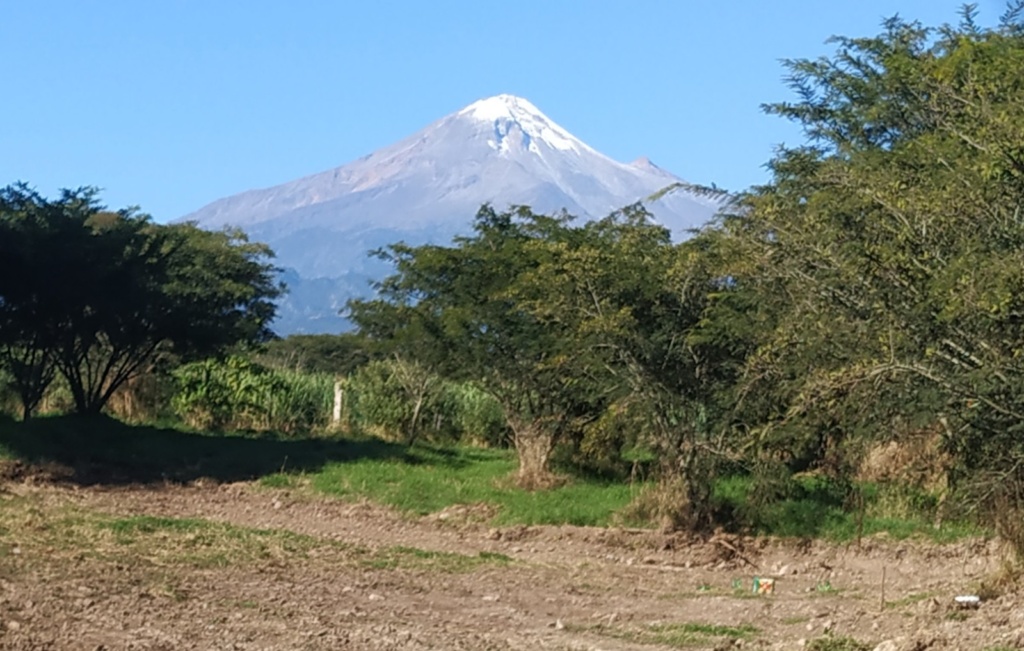
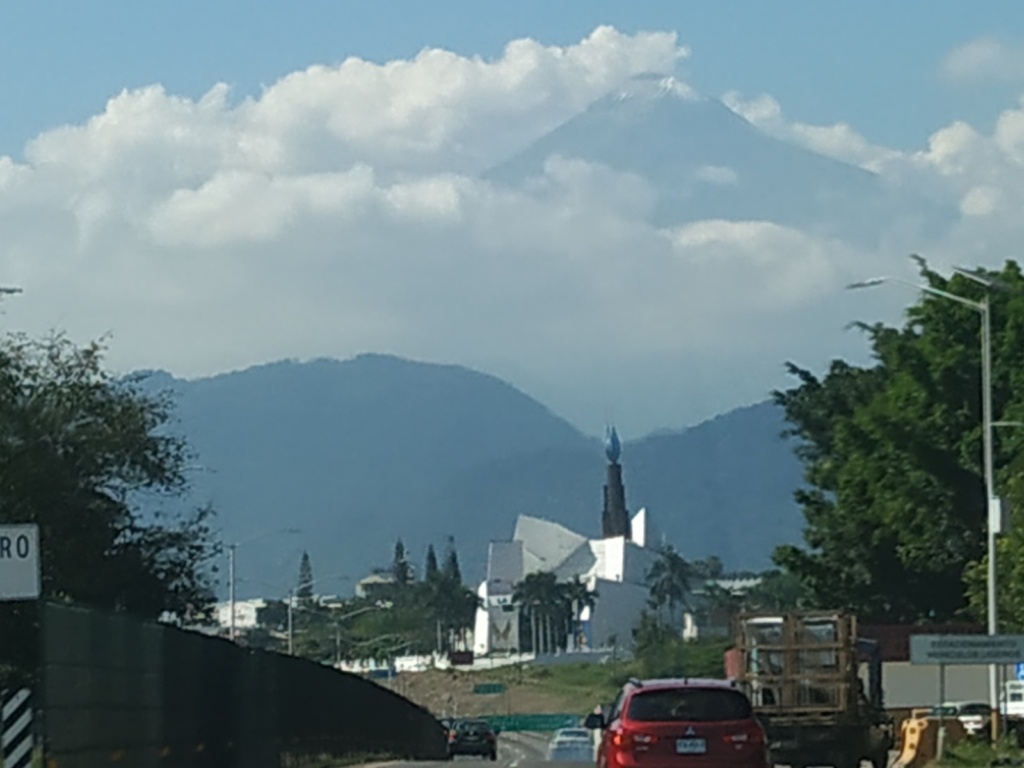
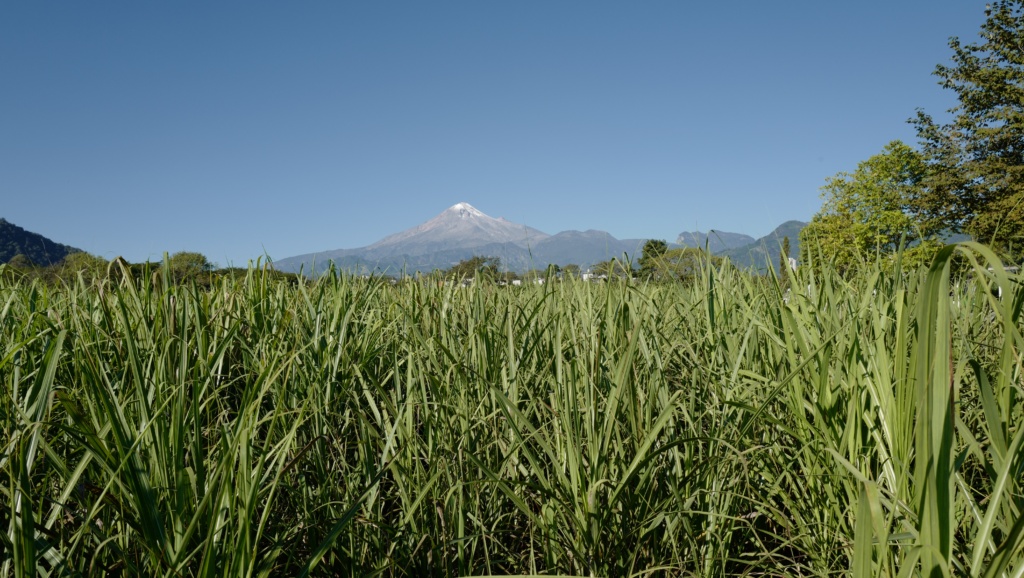
We leave town and take the road for Coscomatepec, this is a mountainous region and the road is narrow.
We notice people wearing same color t-shirts, standing at regular interval by the side of the road and we soon realize that they are taking part in a sort of marathon pilgrimage in honor of “La Virgen de Guadalupe” (Our Lady of Guadalupe) who is celebrated on December 10 in Mexico. This is an important religious festival, associated with a series of five apparitions of the Virgin Mary to a poor indigenous indian which are believed to have occurred in December 1531. This “marathon” is taking place ahead of the national holiday.
We seem to get stuck behind a procession every few kilometers. In each case, the people alongside the road have been dropped by a bus stopping every 30 to 50 m. This is followed further down the road by a head-car/ truck, highly decorated, playing music and with a big picture of Our Lady of Guadalupe going at a crawling pace and following a torch bearer. When that person reaches the new pilgrim by the side of the road, in relay fashion he/she passes the torch, that new bearer starts running and the relieved one jumps on a bus at the back of the procession. There are also people simply walking and singing, waving pictures of the Virgen de Guadalupe behind the head-car.
At one point there is a massive traffic jam ( sometimes processions are going both ways, up and down the road at the same time !!). We are going at crawling pace but see a PEMEX petrol station and stop there. The attendant agrees to let us stay for the night but makes us move away from the road towards the back and we discover why later.
Around 10 pm, we start hearing people singing and loud bangs from firecrackers. It is a procession coming down the road !They stop at the station. We hear people all around us ( we are in the tent) and soon the young attendant calls us and asks us to join in the fiesta. He has brought some food for us: Tamales and a hot fruity drink ! The drink is welcomed as it is chilly but the tamales is an acquired taste and we cannot quite face them at this time of night. There are plenty of families around with young children and everybody seems to have fun. After a while we retreat to our tent. The fiesta is over by 11:30 pm.
TAMALES
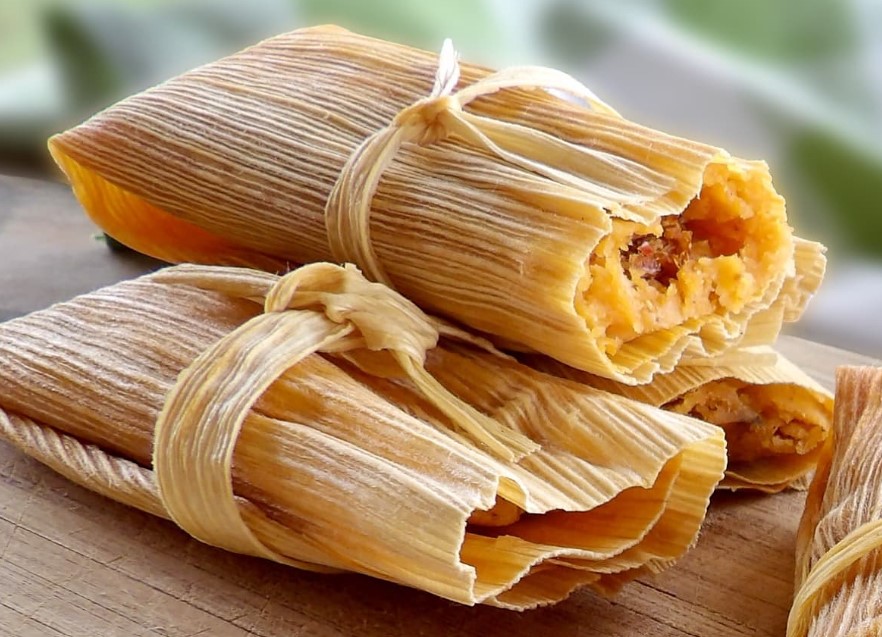
Popular street food. It consists of a dough made from dried corn flour(called masa), spread on a dampened dry corn husk, with an added filling of meat or vegetables or even a sweet filling, rolled into a parcel and steamed.
